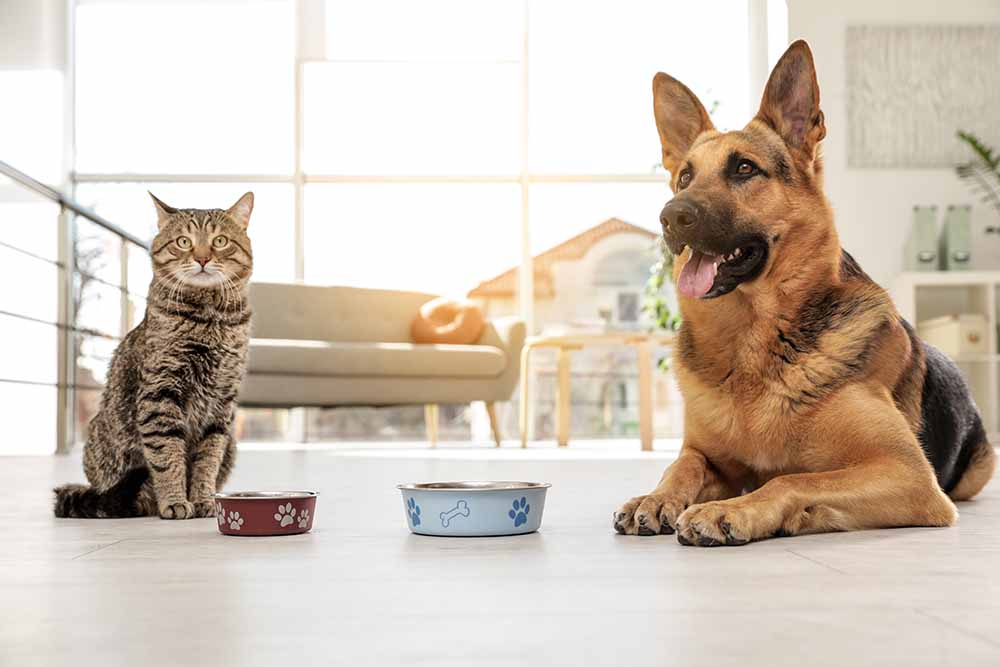
As beloved members of our families, our pets provide us with unconditional love in exchange for room, board, and plenty of pats and scratches. For pets to live long and healthy lives, however, a properly balanced diet is essential, and for many pet owners, that means raw feeding. Whether you have a single cat or dog or a house full of four-legged pals, choosing the right food can be complicated – especially once you leave the familiar territory of canned-and-kibbled varieties. While you should never make a major change to your pet’s diet without consulting your vet, if you’re interested in getting your pet onto raw food, here are some essential facts to consider.
For cats For dogs The problem with conventional pet food The pros of raw food The cons of raw food
For cats
One of the most amazing things about cats is how little they’ve changed physiologically since becoming human companions some 10,000 years ago. Before that, cats lived in the desert and survived by hunting rodents, birds and other small creatures, and their digestive tracts remain best suited to digesting these complex and protein-rich foods today. Cats are obligate carnivores – meaning they must eat other animals to survive, and that means that any kind of food you provide for your feline should be mostly protein, with a bare minimum of carbs and fillers.
For dogs
Dogs, unlike cats, are better adapted to eating more kinds of foods, but they still thrive on diets rich in animal protein, with fruits, veggies and carbs mixed in. Like commercial cat foods, dry kibble and canned dog food vary widely in terms of quality, so you should always read the ingredients and choose a brand with lots of protein and few fillers, additives and preservatives.
The problem with conventional pet food
While dry food (AKA kibble) and canned wet food both claim to provide balanced nutrition, these are both also highly processed, which can be difficult for your pet to digest and can lead to a range of health problems. Dry food (even top-shelf dry food) is a prime offender, for the simple reason that it’s difficult to know what’s in it, how it’s made, and how your cat or dog will respond to it in the long run. Canned wet food can be better (provided it’s made with good ingredients) but there’s still a fair amount of processing going on, and it can still lead to health problems in the long term.
The pros of raw food
Experts recommend raw diets for pets because they are minimally processed, contain fewer fillers, and are closest to what a pet would eat in the wild. For cats in particular, whose digestive systems are suited to freshly-killed animals, this can contribute to a glossier, healthier coat, healthier teeth and gums, and healthier body weight. Raw diets also provide something all cats need: moisture. Because cats evolved in the desert, they are adapted to drink water only occasionally and get most of their hydration directly from their food – something raw food has lots of. For dogs, a raw diet is believed by many to function along similar lines, providing a healthier, more direct way to take in nutrition, and leading to healthier teeth and gums, a shinier coat and increased energy.
The cons of raw food
Despite the growing popularity of raw feeding, many owners are hesitant to make the switch for a couple of reasons. For one thing, raw meat can contain pathogens like salmonella that can make your pet (or anyone else in your home) sick. While the risks of salmonella to pets is small, the risk of cross-contamination from a pet’s bowl or face to children, pregnant women or immunocompromised people in your home means that proper sanitization is essential. If you choose to raw-feed your pet, make sure that food prep areas and the areas around your pet’s dishes are regularly cleaned and disinfected (just as you would after cooking raw chicken for yourself).
Raw food can also be more costly and less convenient than conventional canned or bagged varieties. While making your pet’s food yourself is more economical, it is time-consuming and requires close attention to your pet’s specific nutritional needs. The best choice for many is pre-prepared raw food, which is widely available frozen in most pet stores, and much more convenient than making your own. If you like the idea of raw food, but are nervous about cross-contamination, cooked pet food made from real meat and veggies (usually sold freeze-dried or frozen) might be a good compromise.
Jeremy Freed is a freelance writer and editor based in Toronto. His writing about fashion, travel, food and design appears in Sharp, Harry and re:Porter magazines, among many others.